Sudbury Hall Home for Girls, Wembley, Harrow on the Hill, Middlesex
The Sudbury Hall home for girls, on Harrow Road, near Wembley, was opened in 1872 by The National Refuges for Homeless and Destitute Children (later known as the Shaftesbury Homes). It was used to accommodate girls who up until then had been housed in cramped quarters at the charity's Refuge at 19 Broad Street, in the disreputable St Giles' district of London.
The purchase of Sudbury Hall, which came with nearly three acres of grounds, cost £3,200, with a further £2,000 expended on its conversion. The home was formally opened by the Earl of Shaftesbury on July 6th, 1872 and could accommodate 100 homeless and destitute girls, aged from 6 to 12 years at their date of admission.
The Sudbury Hall site is shown on the 1914 map below.
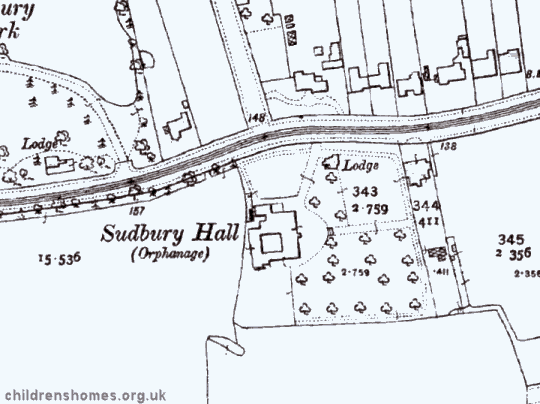
Sudbury Hall Home for Girls site, Wembley, c.1914.
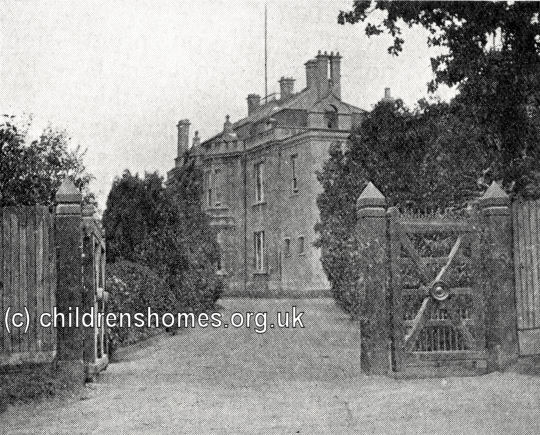
Sudbury Home for Girls, Wembley, c.1920s. © Peter Higginbotham
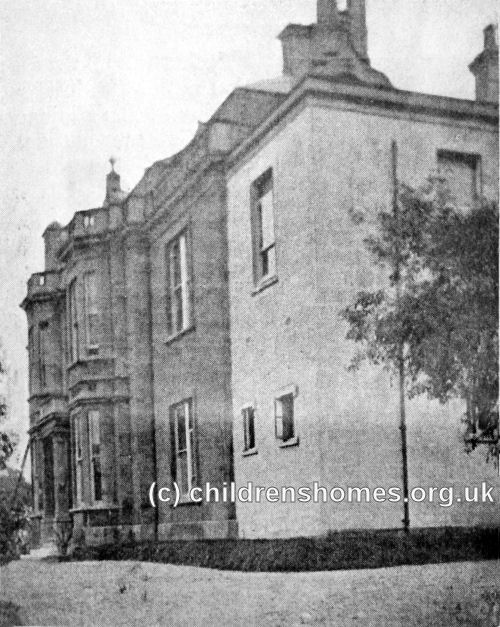
Sudbury Home for Girls, Wembley, early 1900s. © Peter Higginbotham
Since 1866, the matron of the Broad Street Refuge had been Miss Emma Chipchase. She moved with the girls to Sudbury Hall. Under her direction, the girls performed all the domestic work of the home — cooking, cleaning, washing and ironing. Apart from keeping the home's running costs down, this work was intended to give the girls a sense of responsibility and to make them readily employable when they left. To help new girls settle in, Miss Chipchase introduced a scheme where each new arrival was assigned an older girl as a special friend who would help her through the first few days at the home. On her bed, each new girl found a doll waiting to welcome her, which was hers to keep so long as she behaved herself.
The home also provided the girls with classroom education. An 1892 inspection report recorded that:
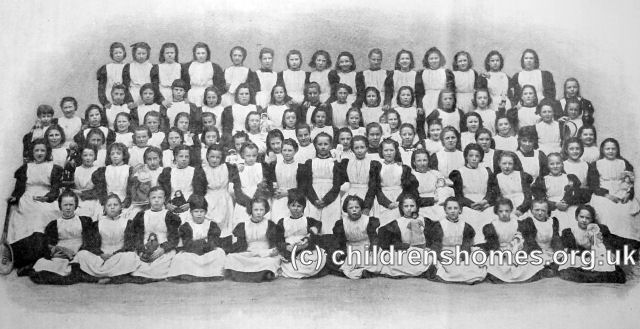
Inmates of Sudbury Home for Girls, Wembley, June 1900. © Peter Higginbotham
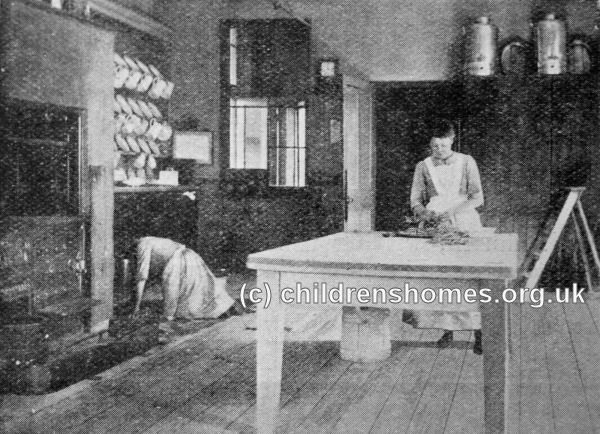
Kitchen at Sudbury Home for Girls, Wembley, 1910. © Peter Higginbotham
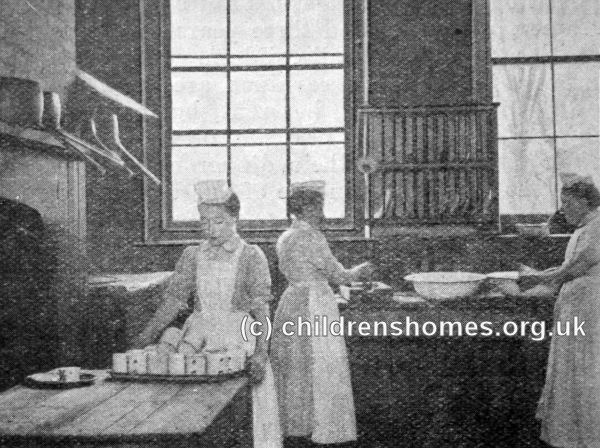
Scullery at Sudbury Home for Girls, Wembley, 1910. © Peter Higginbotham
As recommended by the Inspector, cookery lessons were introduced with an instructor from The Honourable Company of Cooks of the City of London employed to give fortnightly lessons to around twenty of the senior girls who were selected for their ability and motivation.

Cookery class at Sudbury Home for Girls, Wembley, early 1900s. © Peter Higginbotham
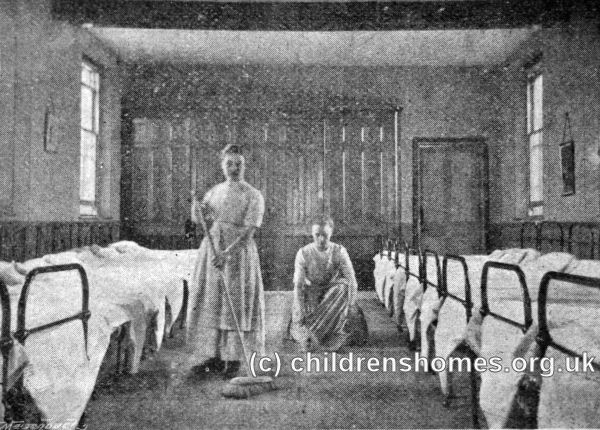
Housework at Sudbury Home for Girls, Wembley, 1895. © Peter Higginbotham

Dormitory at Sudbury Home for Girls, Wembley, 1899. © Peter Higginbotham
At Christmas, the home received many donations from well-wishers, both individuals and also local firms, so that each girl would be sure of a few gifts. These included items such as apples and oranges, sweets, new sixpences, knitted wraps, Christmas letters and cards. An Old Girls' Day was held each year on December 29th. This included a prize-giving ceremony with awards of 10 shillings made to those who had stayed in their posts for a year and been commended by their employer. After two years, a silver brooch was given, and after three, an umbrella. A travelling bag and umbrella was awarded for five years continuous service. After tea, the visitors were entertained with songs, recitations and drill performances.

Dormitory at Sudbury Home for Girls, Wembley, 1910. © Peter Higginbotham

Sick-room at Sudbury Home for Girls, Wembley, 1895. © Peter Higginbotham
On her retirement in 1911, after 45 years service to the charity, Miss Chipchase was succeeded by Mrs Swaffield, who had been the head teacher at Sudbury Hall since 1901. The enormous stresses brought about by the First World War were to take their toll on Mrs Swaffield, whose son was a serving officer. By 1916, she was often not fit for work and had suffered repeated health problems brought about by 'intemperance'. Following a special meeting of the Society's Committee, she was asked to resign. Because of her long service, she was awarded three months' salary plus a payment of £1 a week for three months.
By 1929, increasing structural problems with the building led the charity to look for new premises for the home. The following year, the girls were transferred to new accommodation at Esher Place in Surrey, whose purchase was partly funded by the sale of Sudbury Hall.
Sudbury Hall no longer survives and a police station now occupies the site.
Records
Note: many repositories impose a closure period of up to 100 years for records identifying individuals. Before travelling a long distance, always check that the records you want to consult will be available.
- The London Metropolitan Archives, 40 Northampton Road, London, EC1R 0HB now holds the archives of the Shaftesbury Homes and Arethusa Training Ship. More details in their online catalogue entry.
Census
Bibliography
- Bailey, Marion Chance of a Lifetime - the Story of the Shaftesbury Homes and Arethusa (1996, Dianthus Publishing)
- Cuthbert, V Where Dreams Come True: A Record of 95 Years (1937, London: Shaftesbury Homes and "Arethusa" Training Ship)
- Higginbotham, Peter Children's Homes: A History of Institutional Care for Britain's Young (2017, Pen & Sword)
- Hodder, Edwin The Life and Work of the Seventh Earl of Shaftesbury, K.G. (1886, Cassell)
Links
Except where indicated, this page () © Peter Higginbotham. Contents may not be reproduced without permission.


